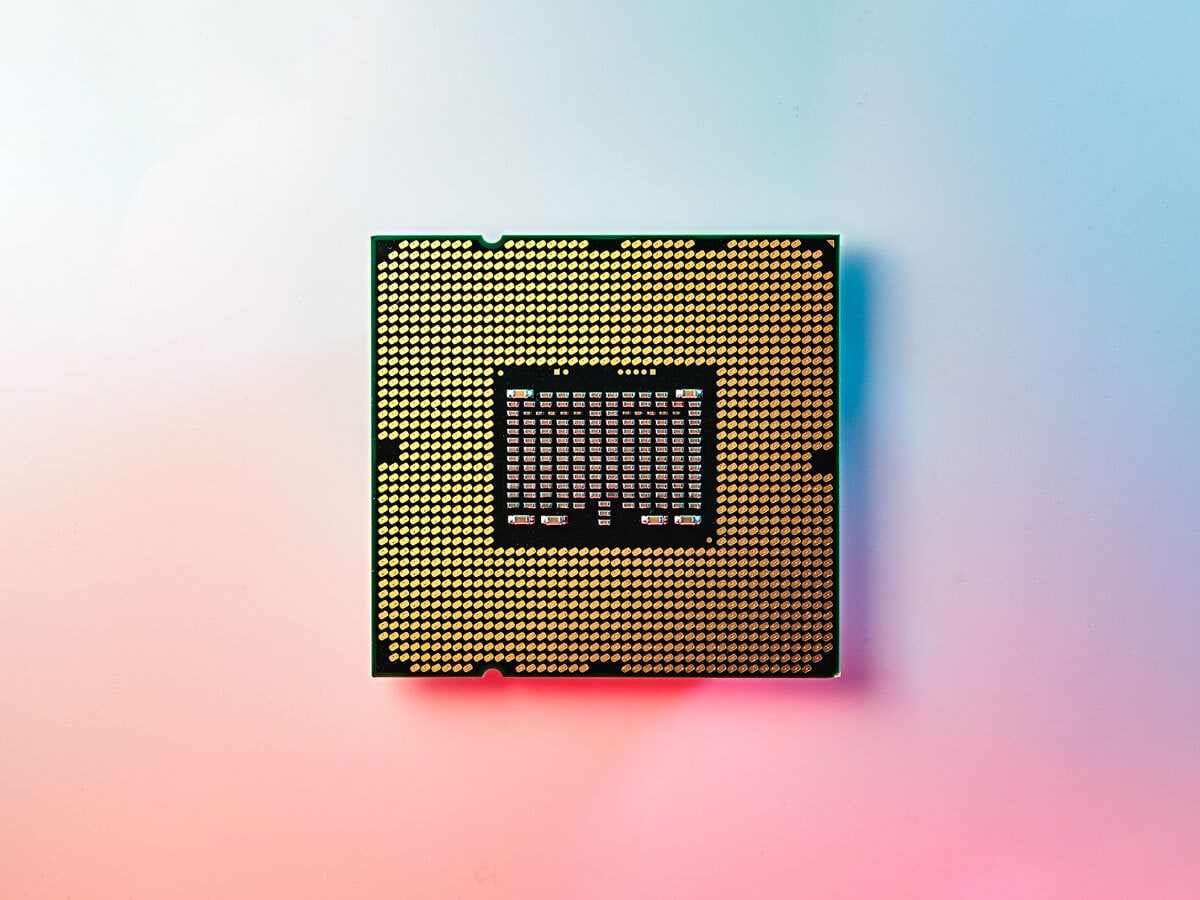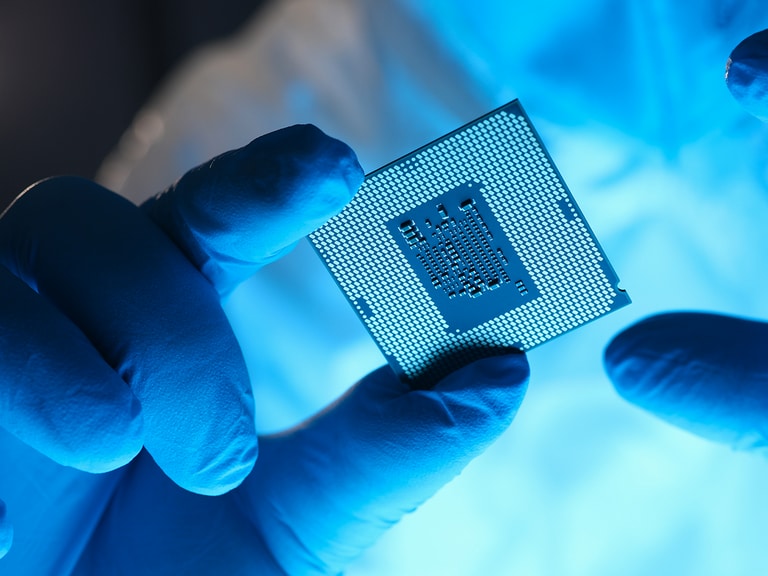There is a consensus among analysts: next-generation chips will power the future. But semiconductor security will be critical, which is why companies are seeking stable supply chains, and pouring money into Japan.
- US memory chipmaker Micron plans to invest ¥500bn in advanced chip manufacturing in Japan, to counter China’s predominance.
- Japan has established a state-backed venture, Rapidus, to strengthen its semiconductor independence.
- The Global X Semiconductor ETF is up 22.5% in the past six months.
Japan and the UK have announced a bilateral partnership on semiconductors, as fears grow about Taiwan’s chip industry getting caught in the crossfire between the US and China.
“The sector also faces challenges and we recognise that recent semiconductor shortages have exposed the fragility of the supply chain,” wrote the UK’s Department for Science, Innovation and Technology and Japan’s Ministry of Economy, Trade and Industry (METI) in a joint statement. Sharing knowledge and skills and opening access to research facilities would help to improve supply chain resilience, they added.
Countries are increasingly cosying up to Japan as they try to reduce their exposure to China, and strengthen economic and national security. Japan, meanwhile, is leveraging the situation in its favour.
While Japan currently plays a minor role in chipmaking, accounting for just 6% of the total number of chips produced last year, trade data shows that it’s a leader in manufacturing semiconductor equipment and materials, with market shares of 35% and 50%, respectively.
The country is expected to double down on its position. Spending on fab equipment is forecast to rise 82% over 2022 levels to $7bn in 2024, according to trade association Semiconductor Equipment and Materials International.
Furthermore, the METI has plans to triple semiconductor sales to ¥15trn by 2030. The country also plans to join the US and Netherlands in curbing exports of semiconductor manufacturing equipment, which will impact Chinese companies. Restrictions are due to come into force in July.
Micron’s Japan investment counters China
Friendlier relations with Japan are no doubt helping to attract foreign investment to the region.
Last week, Micron [MU] announced it expects to spend up to ¥500bn on advanced chips over the next few years. It’ll be the first semiconductor company to bring extreme ultraviolet (EUV) technology to the country. Incorporating EUV into the production process should improve the efficiency, performance and speed of its memory chips. Manufacturing is expected to start in 2025.
“Micron is the only company that manufactures DRAM [dynamic random-access memory] in Japan and is critical to setting the pace for not only the global DRAM industry but our developing semiconductor ecosystem,” said Satoshi Nohara, METI director general of the commerce and information bureau.
The memory chip maker is reportedly in line to benefit from up to ¥200bn in subsidies, reported Bloomberg. This is a clear sign that Japan is keen to throw its support behind a company currently facing a cybersecurity probe in China.
US ambassador to Japan Rahm Emanuel told Bloomberg that the move has a “component of confronting China’s coercion”.
Taiwan Semiconductor Manufacturing Company [TSM] is one of a number of other chip companies considering increasing investment in Japan, reported the Financial Times last week.
Samsung’s memory chip production cut
Micron’s DRAM segment is a key driver for the company. Sales were $2.7bn in its second quarter (Q2) of 2023, making up 74% of total revenue of $3.7bn. However, this was down 4% from the previous quarter.
In the near-term, the company expects demand uncertainties. Supply growth will be behind demand growth, however, and this should improve inventories, leading to a gradual improvement in the supply-demand balance.
“Market recovery can accelerate if there is a year-to-year reduction in production, or in other words, negative DRAM […] supply growth in 2023,” the company stated in its Q2 earnings presentation.
The Micron share price fell following the release of the Q2 results on 28 March, but was lifted a couple of weeks later when Samsung Electronics [005930.KS], the DRAM market leader, announced that it would be cutting its memory chip production.
“Samsung faces a double whammy of… losing money and needing to update the process technology rapidly due to falling behind over the last few years,” tweeted Dylan Patel, chief analyst at industry research firm SemiAnalysis.
Semiconductor demand set for rebound
Research firm Gartner expects the DRAM market to see oversupply for the rest of 2023 due to weak demand and high inventory levels. Revenue is forecast to decline 39.4% in the calendar year, to $47.6bn. In better news, analysts predict that the market will then move to undersupply the following year, with DRAM revenue jumping 86.8% on 2023 levels.
Micron is confident that its data centre revenue has already bottomed and that its data centre customers “should reach relatively healthy levels” by the end of the year.
Artificial intelligence to fuel future demand
Future demand for chips is likely to be fuelled by the application of artificial intelligence (AI). For example, AI servers can have up to eight times the amount of memory of a standard server.
Japan will be hoping that its support of Micron will help to boost its technology industry and the development of next-generation AI applications.
Also playing its part will be state-backed chip venture Rapidus, which was set up last year by a former chairman of Tokyo Electron [8035.T] and a former president of Western Digital Corporation [WDC]. The project is expected to require ¥5trn of investment in order to start mass production by 2027.
“This project is symbolic of the semiconductor partnership between Japan, the US and Europe. In the coming era, advanced semiconductors will become indispensable technology in various fields, including AI, 5G, post-5G and autonomous driving,” remarked Yasutoshi Nishimura, minister of economy, trade and industry of Japan in April.
Funds in focus: Global X Semiconductor ETF
The Global X Semiconductor ETF [SEMI.AX] tracks the performance of the Solactive Global Semiconductor 30 Index. The fund is weighted heavily in favour of US chip companies (67.1%), followed by the Netherlands (12.4%) and Taiwan (11.7%).
Japan, Germany, South Korea and Switzerland all have single-digit exposure as of 22 May. The fund is weighted entirely in favour of the information technology sector (99.6%). It’s up 20% in the past year through 19 May, and up 22.5% in the past six months.
The VanEck Semiconductor UCITS ETF [SMH] is also weighted heavily in favour of US-based companies (77.35%). The Netherlands and Taiwan region account for 13.43% and 9.22%, respectively, as of 30 April. The fund, which offers full exposure to the information technology sector (100%), is up 17.2% in the past year and up 21.5% in the past six months.
All of the holdings in the iShares Semiconductor ETF [SOXX] are US-listed equities. Pure play semiconductor companies make up 79.43% of the fund’s exposure, with the rest allocated to semiconductor manufacturing equipment. The fund is up 12.4% in the past year and up 17.9% in the past six months.
Continue reading for FREE
- Includes free newsletter updates, unsubscribe anytime. Privacy policy





